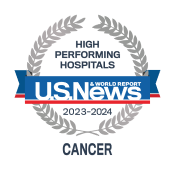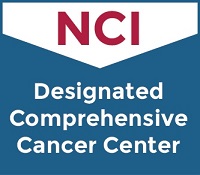Nonmelanoma Skin Cancer Treatment
If caught early, most nonmelanoma skin cancers (NMSC), like basal cell carcinoma and squamous cell carcinoma, can be successfully treated.
Depending on the tumor's level of growth at diagnosis and its type, treatment options will vary.
At UM Greenebaum Comprehensive Cancer Center (UMGCCC), our team of skin cancer specialists offer a wide array of options for patients facing both NMSC and melanoma.
For nonmelanoma skin cancer our treatments include:
Skin Cancer Surgery
Surgically removing the tumor is typically the treatment for about 90 percent of nonmelanoma skin cancer cases.
Conventional Surgery
Most NMSC can be removed by surgery in which the tumor and some of the healthy tissue surrounding it is cut away.
Depending on the size and location of the tumor, this may be done in the physician’s office or in an operating room. The chance of the cancer coming back after being surgically removed is less than 1 in 10.
Mohs Micrographic Surgery
While the majority of NMSC can be removed conventionally, doctors recommend Mohs micrographic surgery (MMS), the most accurate skin tumor removal technique, in some specific situations. These include tumors that are:
- In cosmetically sensitive areas
- In areas with high likelihood of recurrence, such as those on the mid-face and ears
- Larger than 2 centimeters or with ill-defined borders
- More aggressive
- Recurrent
With MMS, a series of horizontal sections of the tumor are removed. After each piece is removed, its margins are checked under a microscope. If they contain cancer cells, another section is removed and evaluated until the entire tumor is removed.
The goal of MMS is to completely remove the tumor while preserving as much healthy tissue as possible.
UMMC's Department of Dermatology offers this surgery. Learn more about Mohs Surgery for Skin Cancer Treatment.
To schedule an appointment or learn more about MMS, call 667-214-1195.
Curettage and Electrodesiccation
Curettage and electrodesiccation is an additional surgical technique for removing NMSC that affects only a small portion of the skin. A curette, which is a cutting device, is used to scrape away the tumor cells. Then, an electrical current is used to kill the surrounding cells.
This is usually repeated two or three times until the entire tumor is gone. This technique is only used for non-aggressive tumors on the surface of the skin.
Radiation Therapy
Using high-energy X-rays to kill cancer cells is known as radiation therapy. Radiation may be used as the primary treatment for patients with NMSC, or it may be used in addition to surgery.
The decision to use radiation instead of surgery as the primary treatment for NMSC depends on the size and location of the tumor as well as other patient health factors. Radiation may also be used to treat more aggressive tumors that are invading nerves or lymph nodes.
Topical Therapy
For NMSC that affects only the very top of the skin or for actinic keratoses, which have the potential to develop into squamous cell carcinoma, a topical medication called Fluorouracil may be used as a chemotherapy.
Unlike standard chemotherapy infused through an IV, this medicine is applied directly onto the skin for 4-6 weeks.
Another topical therapy is Imiquimod, which helps the patient’s immune system respond to the tumor. Imiquimod is used for superficial basal cell carcinoma, noninvasive squamous cell carcinoma and actinic keratoses.
For more information or to make an appointment with one of our specialists, call 667-214-1195.



